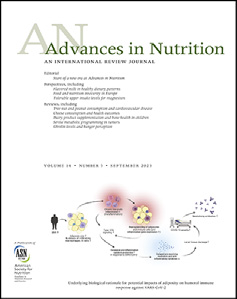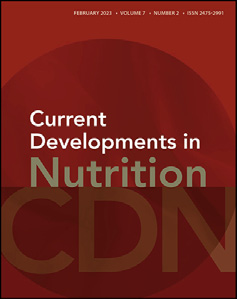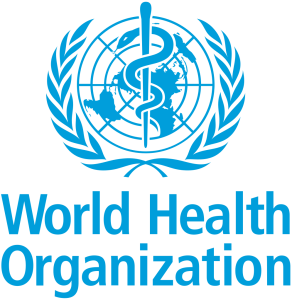Kontak

YAYASAN KEGIZIAN UNTUK PENGEMBANGAN FORTIFIKASI PANGAN INDONESIA | Komplek Bappenas A1, Jl. Siaga Raya, Pejaten Barat, Jakarta Selatan 12510
Ada Pertanyaan?
Isi form disamping bila ada pertanyaan terkait Fortifikasi
Kontak Darurat:
Kirim Email:
Alamat


Food fortification
Frequently asked questions

GENERAL
In theory, balanced and diverse diets can provide all the vitamins and minerals needed for a healthy life. However, for many people it is difficult to get all the micronutrients they need from their diet alone. Where staples are a prominent part of the diet and/or the intake of unhealthy foods (high in sugar, fat or salt but low in vitamins and minerals) is high, meeting the recommended intakes for some vitamins and minerals can be a challenge. This is especially the case for groups with increased needs such as older infants, children, adolescents, and pregnant and breastfeeding women, as well as older people who eat less but have the same or even higher micronutrient requirements. In these cases, fortified foods can provide essential vitamins and minerals that are not being delivered in sufficient amounts through the diet.
No, on the contrary. Micronutrients naturally occurring in foods are often bound to substances in food (such as phytates, tannins, fibers) that inhibit their absorption into the body. Micronutrients such as iron that are added to foods through fortification are often more easily absorbed, as they are in a form that binds less strongly to these inhibitory substances in food.
No. The form of vitamins added to foods are nature-identical, meaning they have the same form of vitamins naturally occurring in foods. Absorption of vitamins added to foods and of those naturally present in food will not differ as the body cannot differentiate and will not reduce the efficiency of absorption of vitamins naturally present in food.
Yes. Giving fortified staples to children and pregnant women is safe and effective. Micronutrient levels of fortified foods are set so that the safe upper limit of micronutrients – a level that is safe for the whole population including children and pregnant women – is very unlikely to be exceeded. In fact, young children and pregnant women and girls often need additional sources of micronutrients beyond fortified staples as they have higher micronutrient needs relative to energy needs.
To our knowledge, there are no studies or case reports about allergic reactions to vitamins and minerals. Food allergies happen in response to specific proteins in foods such as eggs, soy, shellfish or peanuts. Vitamins in foods and fortified foods do not cause the formation of antibodies, which means they cannot provoke allergic reactions.
Micronutrient levels in fortified foods are set in a way that a person would have to eat an abnormal quantity of the food (e.g. up to 25 times the usual consumption of wheat) for there to be any risk of toxicity, which is very unlikely, or even impossible, to happen. The much bigger concern is of fortified foods not reaching those who are most at risk of deficient intakes and hence at high risk of suffering the health and developmental consequences that micronutrient deficiencies cause.
OVERCONSUMPTION OF MICRONUTRIENTS
While fat-soluble vitamins A and D can be toxic at very high doses, they pose no danger to health if consumed within the safe upper level indicated for them, and fortification levels are several fold lower than this safe upper level. Concern only exists for prolonged use in quantities substantially exceeding the safe upper level, which tends to only happen when supplements are consumed for long periods of time in dosages several times higher than recommended. Food supplements such as lipid-based nutrient supplements or micronutrient powders typically contain just one daily recommended intake per serving, which makes their long-term daily overconsumption in excessive quantities very unlikely.
Levels of vitamin A in fortified foods are set well below the safe upper level, which includes a generous safety margin compared to a level that would be toxic, so toxicity of vitamin A from consuming these foods is extremely unlikely.
Example 1: Vegetable oil according to WFP guidelines1 is fortified at 20 micrograms of vitamin A per gram of oil. For an adult consuming 20 grams of oil per day (about 1 ½ tablespoons), this would provide around 400 micrograms of vitamin A, which is less than 50% of the daily recommended amount and seven times less than the safe upper level of 3,000 micrograms (for comparison, the toxic level at which effects on the liver may occur are 2.5-5 times higher).
Example 2: When wheat or maize flour is fortified with vitamin A according to WHO guidelines2 at 1.5 micrograms vitamin A per gram of flour, even people consuming large quantities of 200 grams of flour per day (around 2 portions of pasta), will be consuming no more than 300 micrograms of vitamin A. This is still only around half the recommended intake and 10 times less than the safe level of 3,000 micrograms.
Fortification programmes are designed so that overconsumption is very unlikely, even if multiple foods are fortified. If there is one dominant staple in a country, fortification of that staple is recommended. However, if several different staples are consumed, fortification of multiple staples may be recommended. In this case, levels of micronutrients added to foods are adjusted downwards, so that consumption of all the staples together (as may happen in a person’s normal day), will provide the desired amount of micronutrients together. For example, if three staples are fortified and consumed in similar amounts, fortification programmes will ensure that each one provides one third of the targeted intake of the micronutrients.
OVERLAPPING INTERVENTIONS
Providing fortified staples together with specialized nutritious foods to children with MAM should not be a concern. RUTF or RUSF provide 100% of the daily nutrient intake recommended for recovery, throughout the duration of 6 to 8 weeks. First of all, the additional contribution from fortified foods is minor, because the child will mostly consume RUTF or RUSF. Secondly, the lowest observed adverse effects for the micronutrients are several times higher than the daily recommended intakes, and the safe level is set lower than that as it includes a safety margin. And, last but not least, these lowest observed adverse effect levels could only be reached by regular, excessive unrecommended intake of RUSF and RUTF, which is unlikely to happen because that would exceed the amount of food a child could eat in a day.
High-dose vitamin A supplementation every 4-6 months is recommended for children 6–59 months as a child survival intervention in settings where deficiency is prevalent. While there have been instances of side effects, these are usually temporary and unharmful.
Vitamin A deficiency increases the risk of night blindness, infections such as diarrhoea and measles, and death. Since supplementation is used in places where deficiency is a public health issue, the benefits of overcoming vitamin A deficiency far outweigh the risks of any temporary adverse effects of high-dose vitamin A supplements. The amount of vitamin A in high-dose supplements is more than 100 times higher than the daily recommend intake, of which just 20-50% may be provided by fortified foods. Therefore, high-dose vitamin A supplementation to children aged 6-59 months can be provided safely among populations that also have access to fortified foods.
Providing fortified staples together with fortified blended foods or micronutrient powders should not be a concern. Fortified blended foods and micronutrient powders both may contain 100% of the recommended daily intake of each micronutrient per dose. If two of them are consumed together, they may provide twice the recommended daily intake, which is still a very safe dose for all micronutrients. Fortified staples are fortified at a level that usually would provide less than a quarter of the recommended intake to young children, so the risk is even lower than for fortified blended foods. Furthermore, micronutrient powders are usually distributed at a dosage of 10-15 servings per month, providing an average daily intake of 30-50% of the recommended level.
Yes. The contribution of iron (about 1.5 mg/d) and folic acid (300 μg/d) from fortified staple foods is relatively low compared to supplements and therefore, the likelihood that fortification contributes to exceeding safe levels is low.
The negative effects that could theoretically occur are not of high risk, i.e., not toxic. Women and girls who receive 60 mg/d of iron from iron-folic acid supplements during pregnancy may report gastrointestinal side-effects such as black stools, constipation, nausea and diarrhoea. However, gastrointestinal side-effects to iron supplements are transient and not of toxic concern. Multi-micronutrient supplements for pregnant women contain 30 mg iron, which is less likely to cause gastrointestinal problems.
Toxic concerns for iron occur only when consuming extreme amounts such as 50-100 mg for an older infant and 700-1400 mg for an adult which can only be reached when consuming supplements many-fold. Most supplements for women of reproductive age contain 400 μg of folic acid, the daily recommended amount. The lowest observed adverse effect level for folic acid is 5 mg (5000 μg) per day based on one study in which this dose masked megaloblastic anemia due to vitamin B12 deficiency in elderly people with severe B12 deficiency. This finding was used to establish the safe upper level of 1 mg per day (5-fold lower than the level at which an adverse effect was observed). The safe upper level is higher than the combined intake from supplements and fortified staple would be (400 + 300 μg = 0.7 mg). This is an example where the effect among a population group that is more sensitive is the basis for the safe upper level which also applies to the rest of the population who actually have a lower risk of adverse effects.
DISEASE AND ILLNESS
The role of iron in combatting infections is controversial as iron supplements or iron-fortified foods may increase the incidence of certain types of infections, particularly those of parasites such as malaria. This is substantiated by the observation that iron deficiency reduces the likelihood of malaria infections. On the other hand, iron plays an important role in fighting viral and bacterial infections. Most importantly, prevention measures as well as regular surveillance and treatment should be provided for infections such as malaria so that any provision of iron will be less likely to have adverse effects on infections that may also benefit from the additional iron.
There have been reports of increased occurrence of diarrhoea with the consumption of iron-fortified foods, but it is always difficult to say if this is related to iron or other factors such as the placebo effect. In studies where groups knew what they received (i.e. a food that was fortified with iron or not), diarrhoea was reported to a greater extent in the iron-receiving than in the control groups. In studies where groups did not know if they received foods fortified with iron or not, no increased diarrhoea was reported compared to those who received foods without iron.3 Therefore, the findings on possible links between iron-fortified foods and diarrhoea are mixed and need to be further elucidated.
Thalassemia is a common genetic disorder in some parts of the world and characteristics include abnormal hemoglobin formation. The body compensates for the chronic state of anemia by increasing intestinal absorption of iron. A second concern is chronic iron overload from regular blood transfusions. There is no evidence for adverse outcomes related to iron-fortified foods in people with thalassemia, but caution should be taken, particularly in those with history of recurrent blood transfusion as they tend to accumulate iron. In populations where prevalence of thalassemia is high, the pros and cons of fortification programs need to be carefully considered, and monitoring for excess should be done at individual level.






























